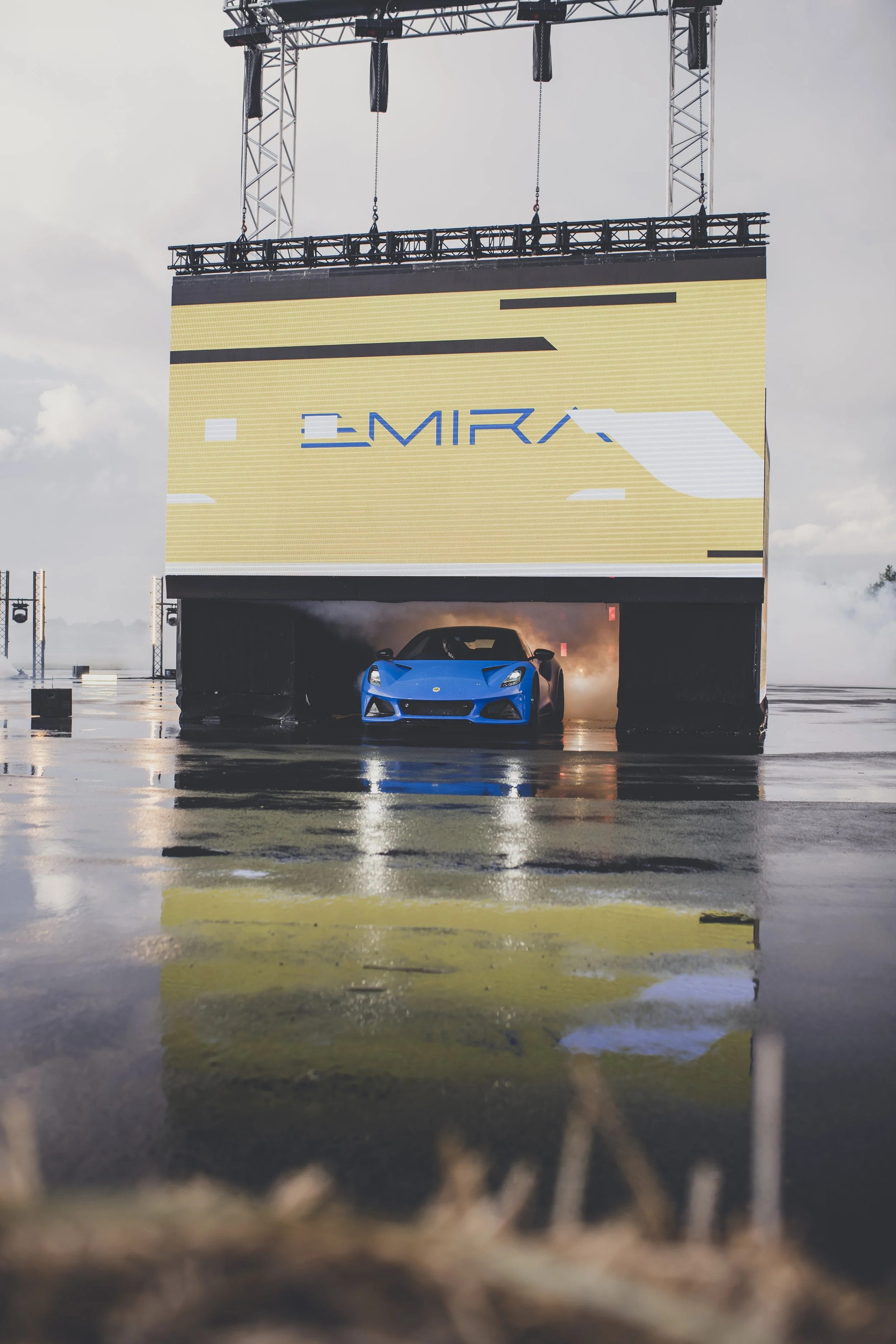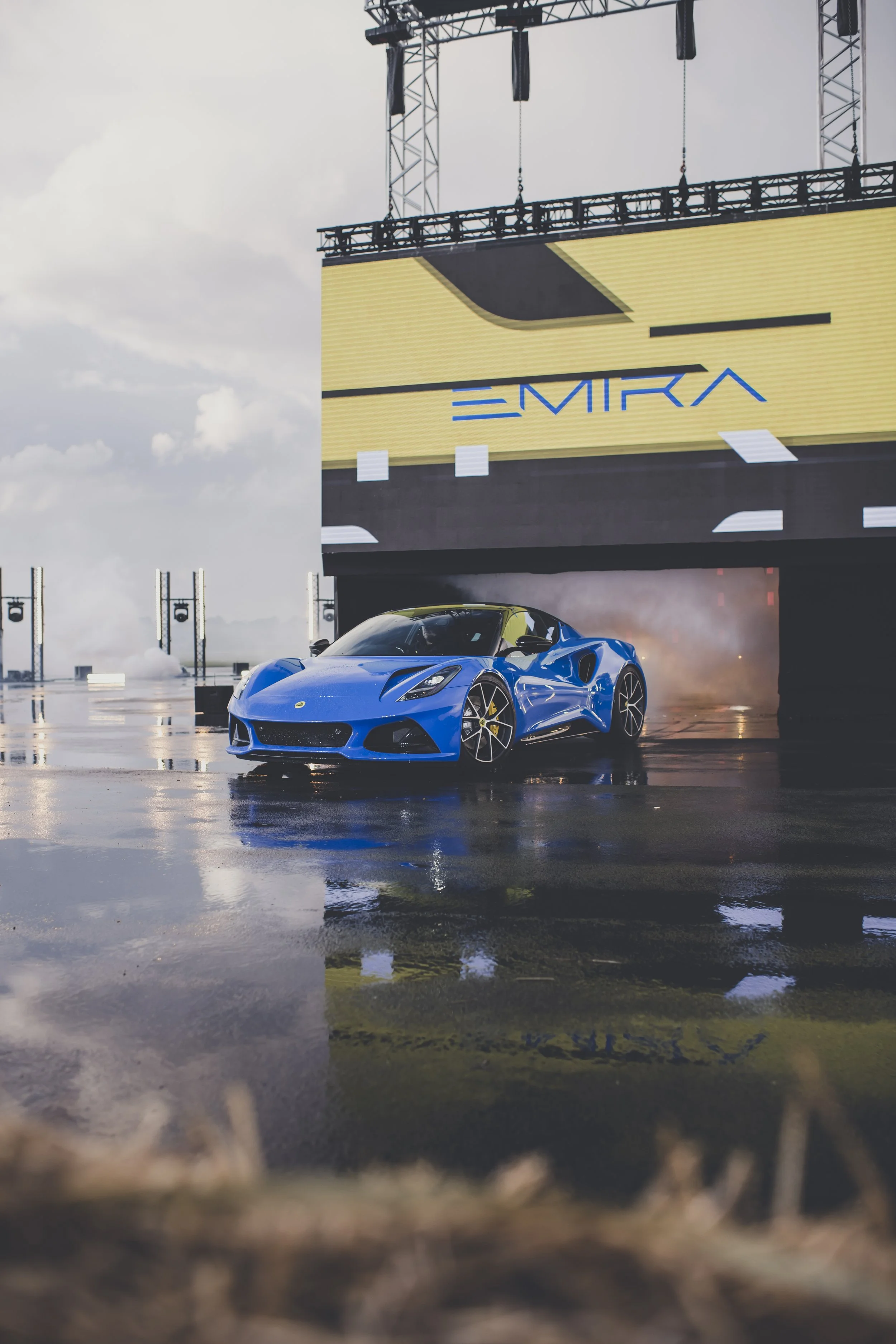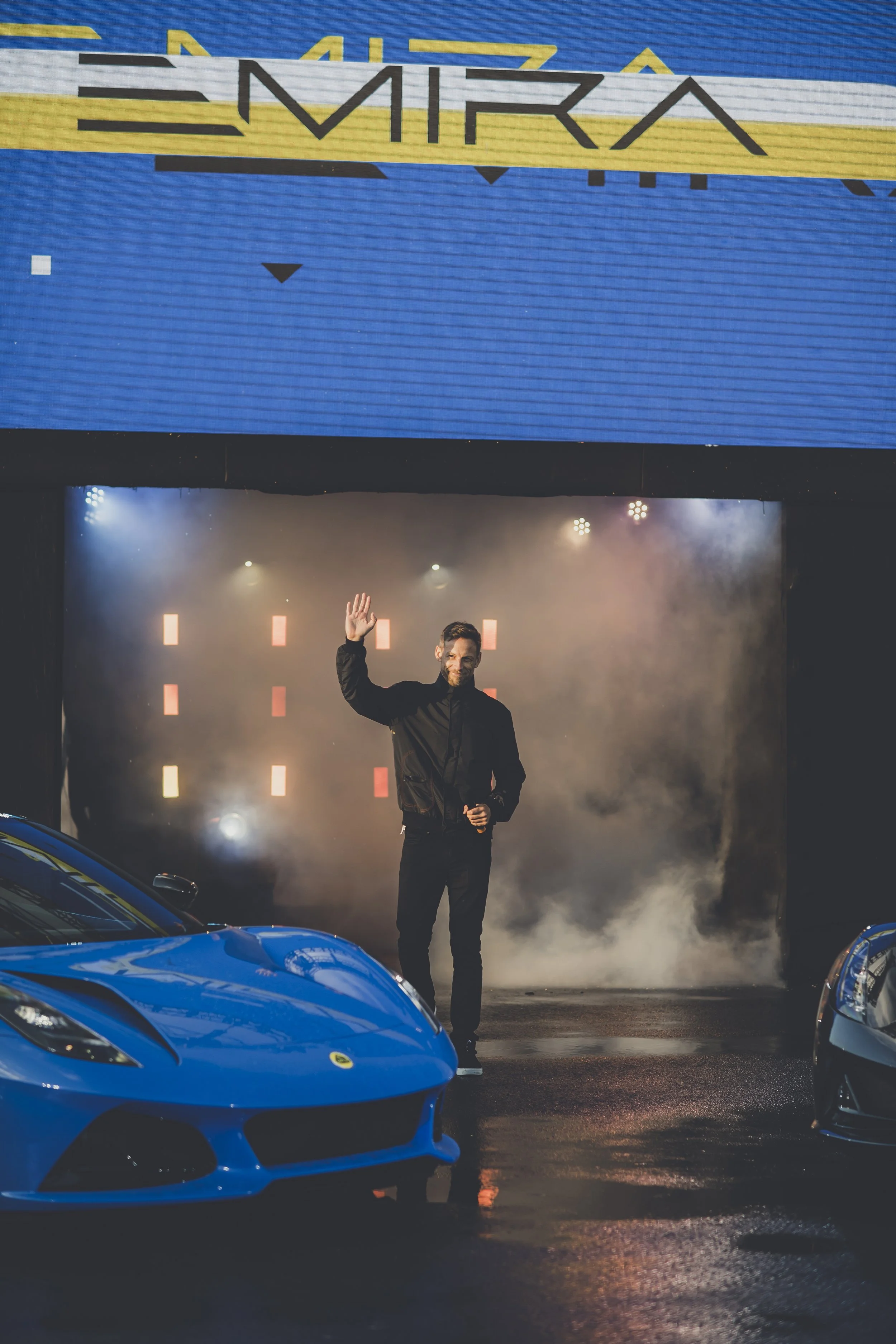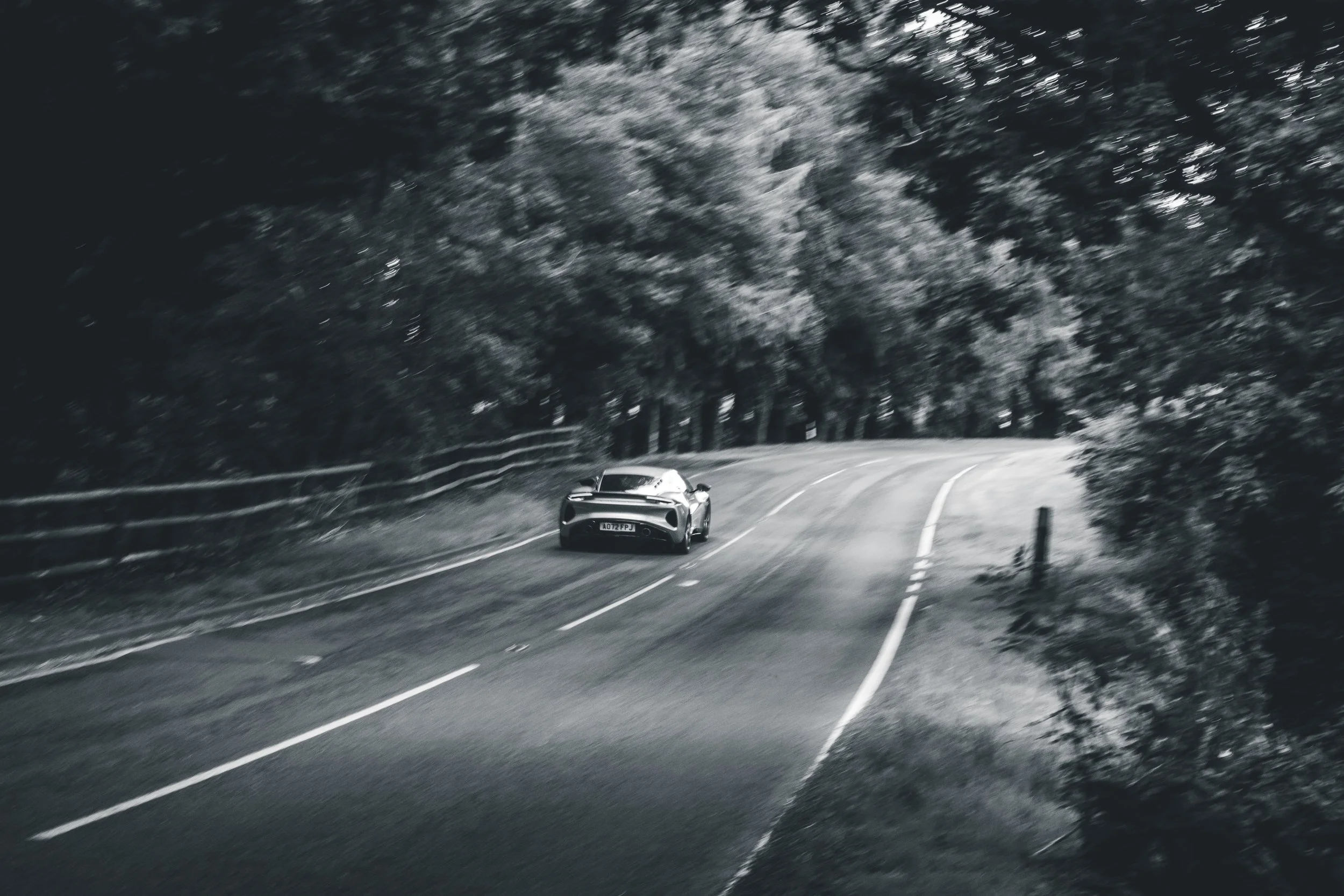REVIEW | Lotus Emira First Edition V6 - The Moment(s) of Truth
Anticipation can be a bitter-sweet emotion. If something is built up to be exciting, it often brings an element of trepidation, too. Likewise, if something is expected to be difficult, human nature often comforts with a 'maybe it won't be so bad after all' approach to help calm the nerves. For the team at Lotus Cars, I can only imagine that the anticipation ahead of the launch of its last-ever internal-combustion-powered sports car was nothing short of an emotional rollercoaster.
In June 2021, the Lotus Emira made its dramatic appearance to the world amidst a very fitting thunderstorm on the Lotus test track at Hethel in Norfolk. It was unveiled by Jenson Button, driving it through a cloud of dry ice and onto a recently waterlogged helipad in front of the world's motoring press. The launch event was dramatic from start to finish, but the initial nerve-wracking anticipation was now over for the folks at Lotus. The next chapter in the new book of tension would be finding out what everyone thought of the very significant new car.
A year or so before the launch of the Emira, Lotus revealed its final edition models of the three cars it had famously been producing up to now: the iconic sports car, the Elise - the circuit hero, the Exige and the grand tourer, the Evora. Production for all three models was to cease making way for the solitary Emira with the promise that the new car would do it all - if that's not an invite for anticipation, what is?
Fast forward another 12 months, and I'm returning to Hethel to collect a First Edition V6 Emira to test and review. I missed the early press drives, so this would be my first opportunity to drive an Emira and the first time since the launch event that I would be up close to one, too.
Upon arrival at Hethel, the Emira I'd be testing for the following seven days was parked up on display beside the iconic Hazel Chapman Way as if it were ready to be collected by a paying customer. Lotus offers this service as a nice touch for customers who wish to drive their new car home directly from the factory. Sat on the concourse in front of one of Lotus' many new buildings, the Emira looked fantastic. Russell Carr and his design team have done an exceptional job styling the new car. The proportions all work, the wheel placement looks good and the aerodynamic features and curves all look purposeful and necessary. It can be easy to overcomplicate sports car design, but the Emira's styling simply makes sense. It is an exceptionally pretty car.
The positive first impressions continued inside the car, too. The Emira is a small car; however, the cabin feels far from claustrophobic. Much of the Emira's underpinnings are carried forward from the previous GT, the Evora, but inside, the two cars seem worlds apart. The old Evora's interior was clunky with questionable features like a double-din head unit infotainment system - the sort of thing found in a Halfords display cabinet. The switch gear was also noticeable as being from various mid-to-late noughties Ford models. The indicators were taken from a Mondeo, and the instrument clusters were pulled from the same stock rooms that supplied the equivalent age Ford Focus. In the new car, though, the Emira is leagues ahead of the Evora. Admittedly, there is still some part sharing, but thanks to the new Geely ownership, the rudimentary Ford parts are now far superior-looking Volvo parts, which makes a big difference. In place of the Halfords head unit, there is a beautifully crafted screen shaped to compliment the interior lines of the dashboard and centre console. The fonts and typography on the infotainment screen are pleasant and consistent with the second screen directly ahead of the steering wheel. In place of clocks with needles, there is a high-definition screen with appealing graphics that alter their layout according to the selected driving mode.
Before departing Hethel, I was offered access to the handling circuit. Naturally, I wasn't going to turn that down, so I ventured onto the test track to be immediately rewarded with the welcoming whine and howl of the supercharged 3.5L V6. My review was off to a good start.
Despite my positive start with the car, on my first lap of the circuit, I noticed my first couple of potential negative discoveries - which were significant.
The engine and gearbox have been carried forward from the Evora and the Exige. In both models, the gear shift could have been better, and I'd have hoped that given many years of running the set-up prior, the notchy gear shift from 2nd to 3rd might have been rectified - but it hasn't. I know that achieving a perfect gear-change for a mid-engine and gearbox car brings challenges, but other manufacturers have figured this out, so why hasn't Lotus?
My subsequent abrupt discovery was the rev limiter. On the Final Edition Exige I'd driven 18 months prior, the same V6 engine seemed to come onto song at around 4500 rpm and bark into a new chapter of torque before shifting to the next gear. In the Emira, though, the point of coming onto the cam was followed almost immediately by the rev limiter. Lotus claims the 3.5L V6 in the Emira produces 400BHP, but to me, it felt about 50BHP short, and due to the engine map, I quickly learned that it was better for short shifting through the power band rather than letting the engine rev out like I would have been doing in the Exige. Then came the pedal positioning. The throttle felt slightly delayed, and the brake travel felt excessively long, meaning achieving a nice heal-and-toe was difficult.
Unfortunately, the list of noticeable gripes grew on my 3-hour drive from Norfolk back to Warwickshire. I immediately thought back to a book I have called Moments Of Truth. In case you're yet to hear of it, the book is by a Swedish businessman named Jan Carlzon. It was written in 1985 following the story of his purchase of the then-failing airline SAS. - I'm at risk of a big tangent here, but stick with me. - Carlzon coined the phrase "moments of truth" as noticeable moments, events and interactions that a customer might face or discover when interacting with an item, a service or an encounter within a business. The theory is that if the customer notices very little, then very little has gone wrong. But if the customer sees a lot, things clearly need improvement. After all, we humans are far more likely to remark on something negative than something that has gone well. Thus, a negative discovery becomes 'a moment of truth'.
An hour or so into my first journey, I'd built up a small list of moments of truth from the driver's seat of the Emira. I discovered that the gear shift is not only clunky between certain gears, but the physical ball of the gear stick is rough to the touch. The engraved shift pattern on the top of the selector has been done in a way that feels uncomfortable to touch and use. Then there was the slight wind whistle from the passenger side window, almost as if the rubber wasn't entirely sealed around the glass. No matter how often I tried opening and closing the window, it was always present. After stopping for a coffee, the wireless Apple CarPlay immediately forgot that my phone had previously been paired with it, and reconnecting would require re-pairing the Bluetooth. - I'd have been less annoyed by this if I had noticed before re-joining the A14, but obviously, I hadn't. The indicators on roundabouts and wider corners didn't ever seem to cancel automatically, and the position of the indicator lights on the instrument cluster was easily missed in the two bottom corners of the screen, meaning I was unwittingly driving along with a left or right indicator flashing before having to cancel the signal manually. And by the time I'd made it home after my 3-hour first drive, I wasn't feeling all too comfortable or relaxed in the driver's seat - what had started as a very positive first impression had become more of a deflating experience.
I was determined not to allow the initial gripes to taint my upcoming week. The Emira had been a press car I'd been excited to book in. With Lotus' bold statement of it being the last ever internal combustion engine and the three-in-one combination replacing the predecessor cars, surely it had to be something special.
It's probably about time I mention one of the other challenging features of the Emira, and rather than being related to something physical, it concerns the car's price. At the launch, Lotus proudly announced the new car's specs, power and expected performance figures, which all sounded impressive. Lotus also reported that the intended retail price would be less than £60,000. Six months later, that figure had increased to £75,996, but fast forward another six months and just over a year after the launch, the First Edition Emira I had on test came with an on-the-road price of £81,995.
To help put things into perspective, that places the First Edition Emira at £295 more expensive than a 2023 Porsche Cayman GT4 (at £81,700) and £6,163 more expensive than the Porsche Cayman GTS (at £75,832). The Cayman is a very worthy competitor as a 2-seater, 6-cylinder, mid-engined sports car, and whilst I've not yet driven the 2023 models of either, I'm willing to bet that my list of moments of truth wouldn't be quite as lengthy as they'll end up being from the Lotus. Admittedly, Lotus plans to launch future versions of the Emira with a lower price tag. However, specific prices and specifications are yet to be announced.
Lotus Emira Vital Satatisitcs
The engine is a petrol-powered 3456cc turbocharged 6-cylinder (V6) with either a 6-speed manual gearbox or an automatic option with paddle shift. The drive train produces 400BHP and 420nM of torque at peak revs (3500-6800RPM). 0-60mph acceleration happens in 4.2 seconds, with a top speed of 180mph. The Emira weighs 1458 kg. Prices from £81,495.00 - Price as tested: £81,995.00
Beyond the V6 Launch Edition, an alternative powertrain option is also available as an AMG inline 4-cylinder 2.0L turbocharged engine, which, despite the smaller capacity, still retains a competitive 360bhp 430nM of torque and a 0-60mph acceleration of 4.3seconds. The AMG-derived 2.0L is only available with an automatic gearbox.
A few days into my week with the Emira, I discovered several things I really liked about it. The V6 (while potentially crying out for re-tune - which I predict will come in time) has superb character. Once short shifting became the norm, riding the torque band became enjoyable, and the sounds produced from the induction and the exhaust were terrific. Perhaps unsurprisingly, the handling is nothing short of superb. There are two chassis options available for the Emira, 'Sports' - which offers a firmer ride through the suspension as well as grippier Michelin Pilot Sport Cup 2 Tyres, and 'Touring', which is a little softer and rolls off the production line with Goodyear Eagle F1 Supersport tyres. I had the Touring specification, which was a great all-rounder in terms of ride comfort and road handling. Bashing down bumpy B-roads and through the occasional twisty road was a delight. The steering feels light, direct, sharp, and responsive, with no compromises on fast roads or slow traffic driving.
Another great feature of the Emira is the visibility. The focused driving position and small cabin mean the visibility out of the car is near-perfect. This visibility makes positioning the car on the road exceptionally easy, granting the ability to enter technical corners confidently. The Emira is a spectacularly fun and engaging drive, which, when topped with other enjoyable elements such as a very decent KEF sound system and the new-age pleasant design aesthetics, feels like an exceptional place to be.
What the Emira isn't, though, is perfect - it's far from it. In my seven days with the car, I enjoyed it a lot, but unfortunately, my list of 'moments of truth' only continued to grow.
Following a night of rain, upon opening the boot, the luggage compartment filled with trapped water cascading through the ventilation gap between the glass panel and the boot lid. The phone connectivity issue continued to be - an issue. On two occasions, the car failed to start, throwing up a fault with the electronic parking brake - one of these occasions required a battery disconnect and reconnect to get me back on the road. Whilst the interior styling is (on the whole) excellent, some materials do let it down. For example, the shroud surrounding the instrument cluster looks like it might have been a plastic ice cream tub in a previous life, and there is a very annoying plastic 'fighter jet style' switch cover that goes over the start button. On a Lamborghini Aventador, this works, but on the Emira, it just gets in the way. Storage inside the car is okay - however, larger bags are restricted only to the rear luggage compartment, which gets reasonably warm due to its proximity to the engine. Despite the appearance of a frunk/accessible bonnet, there is no front storage or frunk on the Emira either.
Lotus' anticipation ahead of the dramatic launch of its last-ever ICE sports car is likely to have been matched by that of the customers and fans of the marque, yet 12 months following the launch, I feel that the storm hasn't yet fully passed. At the time of writing, on AutoTrader alone, there are 46 nearly new Emiras for sale, 26 of which are priced a few thousand pounds under the £82k figure Lotus are asking for.
If the Emira launched at the 2nd price hike of £75,000, then perhaps many of the foibles and quirks I'd noticed would be forgiven - But the reality is, at a price beyond £80,000, the Emira is currently in an exceptionally competitive market of cars many of which will have a significantly smaller list of 'moments of truth'.
The Emira First Edition V6 has a lot to like, but sadly for me, a little more to dislike - most of which is harmed more so by the price tag.
Words: John Marcar
Pictures: Henry Faulkner-Smith (roadtest) & Amy Heynes (Emira launch event)








































